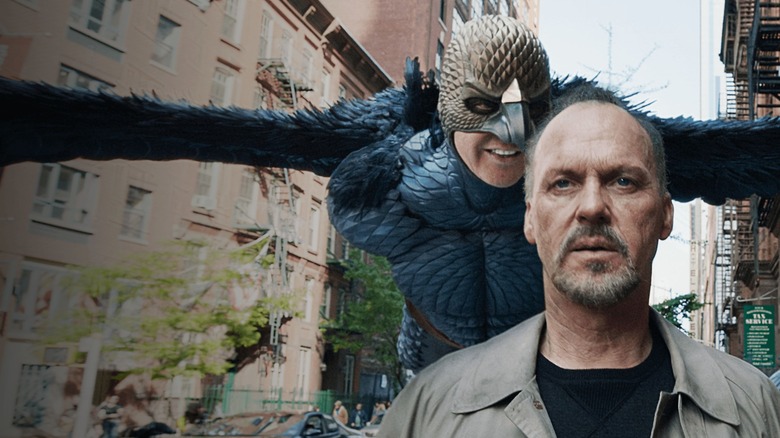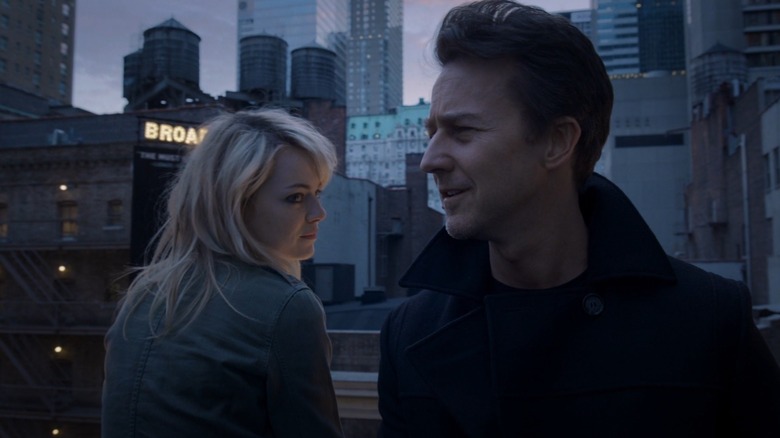Birdman's Brutal Filming Method Made Every Mistake That Much Worse
One of the best films to come out of 2014 was "Birdman or (The Unexpected Virtue of Ignorance)," a movie following a former big-name Hollywood actor who tries to make it as a more serious, thoughtful artist performing in theatre. Much like how Michael Keaton once played Batman in the Tim Burton films, his character Riggin is famous for playing the in-universe equivalent superhero Birdman, and is frustrated with his inability to ever escape from that one role. It results in a beautiful, introspective story about what qualifies as real art and what an artist must risk to make it.
But enough about all that — what really makes this movie so cool is the way it seems to have been filmed in one continuous take. Whereas previous films like "Children of Men" impressed us with scenes that went on for several minutes without a clear cut, "Birdman" pulled the same feat for two hours straight. It's a more effective version of what Hitchcock attempted with "Rope" back in 1948, and one that feels a little less forced than the (also-great) one-shot film "1917" that would be released in 2019. Of course, none of these films were actually filmed in one two-hour take, but the transitions from place to place and the jumps in time are all done with fun camera tricks creating that illusion. A slip-up wouldn't ruin the whole movie, but it would ruin the whole painstaking scene.
"If you flubbed a line, it was the worst," said Emma Stone about her experience on set. "You would have to start all over again from the very top. If someone had given the performance of his or her life, it was just gone forever."
Raised stakes
Director Alejandro G. Iñárritu told The Hollywood Reporter about his difficulties with directing this movie, saying, "Normally, I can count on six months of a luxurious, rational process in the editing room, manipulating, polishing or hiding my s***, but I couldn't do that here." Due to the one camera, one take nature of the filming process, every scene had to be planned out meticulously beforehand, taking account both the ever-shifting placement of the camera and the movements of the actors. Iñárritu said:
"We told the actors, 'You are going to walk on this high wire, and you have to make it seem like a walk in the park.' We told them, 'If you fall, you will fall to your death."
One particularly difficult scene to shoot was the one where Keaton has to run through Times Square in his underwear at night, having to brush off the gazes and comments from hundreds of onlookers. On Iñárritu's budget, they couldn't afford to shut down the whole street to film the scene, which means they had to worry about actual tourists and regular civilians getting in the way. There were a million little variables that would've made the scene difficult to film even if they were allowed to break the scene up with a bunch of cuts.
But even the seemingly simple scenes had an extra hurdle to them now, such as one early scene (shot in a 6-minute continuous take) where Stone's character has to walk Edward Norton's character to the dressing room. "But I would walk either too fast or too slow," Stone said. "Alejandro was like, 'You're ruining the movie!' He was being tongue in cheek but probably meant it to some degree. It really put a fire under your ass."

